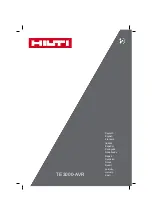
HOW TO USE:
1. With the vehicle elevated, attached the clamps to the suspect areas. If, for
example, you suspect there is a bad wheel bearing , attach the clamps, one each ,
per wheel bearing. Put the clamp on the tie rod or knuckle close the inside of the
wheel. In order to generate an exact cross-comparison of sounds place the clamp on
identical opposite locations. With the availability of two more channels, you could
place transmitters on the transmission and differential, since many times what you
think is a wheel bearing turns out to be something different. Or, if you suspect a
brake problem, attach the 4 clamps adjacent to the brakes.
The closer clamp is
positioned to the suspected problem, the better sound reproduction you will
get.
2. Be sure the transmitters are securely fastened to the locations chosen. Each
transmitter has 3 methods of attachment:
a) First, there are two internal magnet so that transmitter can hold to a metal surface.
b) Second, there is a Velcro strap that can be wrapped around any non-moving part.
C) Third, there is a spring-loaded clam that can grab onto non-moving part. BE SURE EACH
TRANSMITTER IS SECURELY HELD IN PLACE WITH ONE OF THESE METHODS TO
AVOID LOSS OF TRANSMITTER FROM EXCESSIVE BUMPS OR SHAKING DURING
ROAD TEST.
Also, carefully check for clearance of all vehicle parts that are located close to the transmitters to avoid
contact/damage from movement or heat.
3. Using the location identifier note pad, record information on not pad of the location
and corresponding channel for each microphone/clamp. This will allow you to
properly assign the problem noise to the proper malfunctioning part while conducting
the road test.
4. It is highly recommended that if earphones are used during diagnoses (there is a
earphone jack available on the receiver), that there be a separate driver for the
vehicle.
CAUTION:
I t is against many state laws to operate a motor vehicle while wearing
earphones.
5. Before conducting the road test , turn on the on/off volume control switch located
on the front of the Wireless ChassisEAR
TM
receiver. Select the first channel and
adjust the volume to the desired level. Various volume levels may reveal different
sounds and problems. Initially make a mental note of the sounds you hear as you
listen. Next, push each channel according to the locations, for example channel #2
and #4, just by pushing the channel indicator in an alternating manner.
IMPORTANT:
Make notes while driving (being cautions) as to what is heard on each channel (rattles, squeaks,
grinding, whining, etc.) When you have returned to the shop, you can then zero in on the exact
location of the noise/problem.
FUEL INJECTORS:
It is quick and easy to hook up the Wireless ChassisEARTM clamps on fuel injectors. The “tapping”
solenoid are easily heard. If a clear metal to metal “ringing” sound is heard, then the injectors is clean.
If the “needle” inside the solenoid is making a dull “thud”, then a deposit buildup more than likely exists
inside the injector. A cleaning of the injectors is suggested . It is important to listen to the injectors
before and after cleaning in case one is still dirty after cleaning.





































